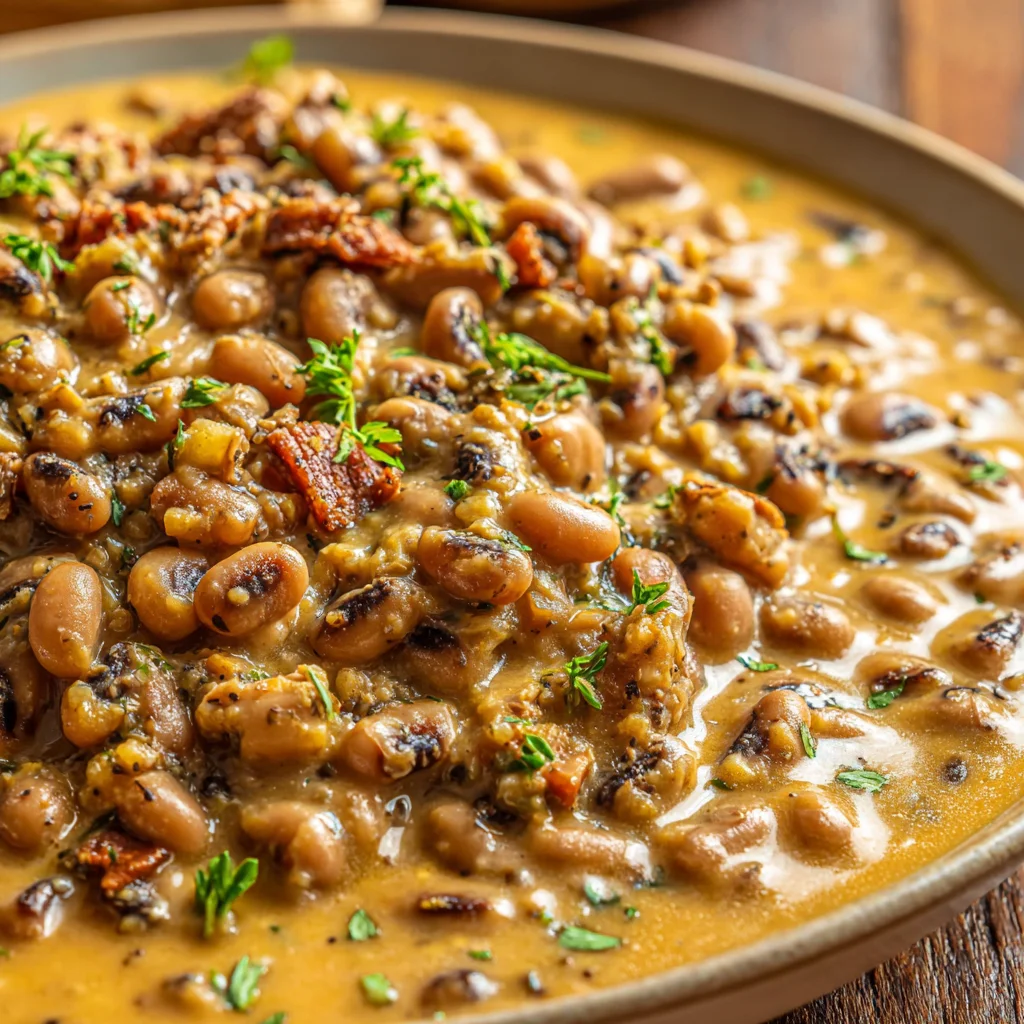Ingredients
Equipment
Method
Step 1: Preparing and Soaking the Peas
- Rinse and Sort: Pour the dried black eyed peas onto a baking sheet and carefully sort through them, removing any debris. Rinse the clean peas thoroughly under cool running water.
- Quick Soak Method (Recommended): Place the rinsed peas in a large pot and cover them with water by at least two inches. Bring the water to a rapid boil for 2 minutes, then remove the pot from the heat, cover it, and let the peas stand for 1 hour. Drain the peas completely before moving to the next step. (If skipping the soak, increase cook time by 30-45 minutes.)
Step 2: Building the Flavor Base
- Render the Meat: Place a large Dutch oven over medium heat. Add the ham hock or bacon lardons. Cook slowly until the fat has rendered and the meat is nicely browned (5-7 minutes). If using bacon, remove the cooked bits and set them aside, leaving the rendered fat in the pot.
- Sauté the Vegetables: Add 1 tablespoon of the butter to the rendered fat. Add the diced yellow onion, celery, and green bell pepper. Cook, stirring often, for 8 to 10 minutes until the vegetables are very soft and translucent. Add the minced garlic, dried thyme, and red pepper flakes (if using) and sauté for 1 minute until fragrant. Stir all ingredients together.
Step 3: Simmering the Peas
- Combine and Add Liquid: Add the drained, soaked peas, the smoked ham hock (if using), and the bay leaf to the pot. Pour in the 6 cups of chicken broth. The liquid should cover the peas by at least one inch; add the remaining broth or water if needed. Bring the liquid to a rolling boil over high heat.
- Cook Slow and Low: Immediately reduce the heat to the lowest setting so the liquid maintains a very gentle simmer. Cover the pot partially with a lid. Simmer gently for 1.5 to 2 hours, or until the peas are tender and easily mashable. Check every 30 minutes, adding more hot liquid as needed to keep them moist.
- Achieve Creaminess: During the last 30 minutes, use the back of a wooden spoon to gently mash a handful of peas against the side of the pot. This releases the starch and helps thicken the broth into a creamy sauce.
Step 4: Finishing and Seasoning
- Finish and Season: Remove and discard the bay leaf and ham hock (shred and return any usable meat). Stir in the remaining 1 tablespoon of unsalted butter and the heavy cream (if using). Add the initial 1 teaspoon of salt and 1/2 teaspoon of pepper, then taste and adjust the seasoning aggressively until the flavors pop.
- Serve: Let the peas rest off the heat for 10 to 15 minutes before serving. Garnish with reserved cooked bacon pieces, if used.
Notes
For a richer, smoky depth, always opt for the ham hock over bacon. If using a slow cooker, follow steps 1 and 2, then cook on low for 6 to 8 hours (or high for 3 to 4 hours), mashing gently before the final seasoning.
